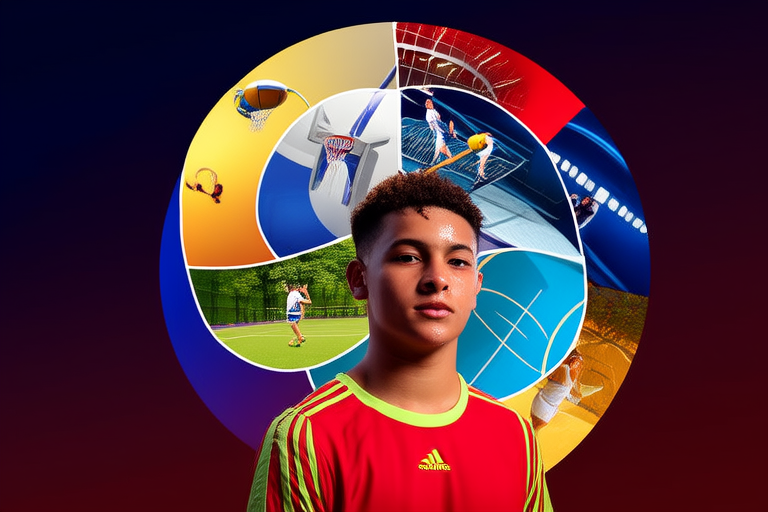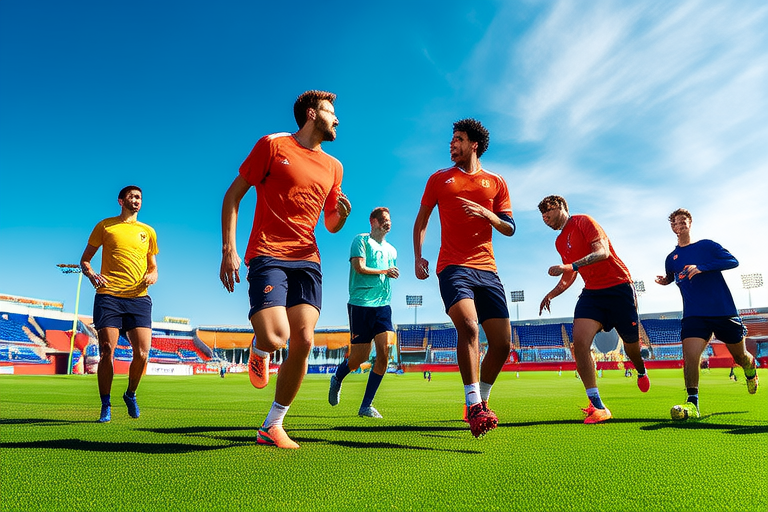The World of Sports: A Comprehensive Exploration
Sports have been an integral part of human culture for centuries, offering a wide range of physical and mental benefits. From enhancing cardiovascular health to promoting social interaction, sports play a crucial role in maintaining a balanced lifestyle. This article delves into the diverse world of sports, exploring various categories and their unique characteristics. By understanding the different types of sports available, individuals can find the perfect activity to suit their preferences and fitness goals.
Physical and Mental Well-being Through Sports
Engaging in sports provides numerous physical benefits, including improved cardiovascular health, increased muscle strength, and better coordination. Regular participation in sports also helps in maintaining a healthy weight and reducing the risk of chronic diseases. Moreover, sports contribute significantly to mental well-being by reducing stress, anxiety, and depression. The sense of accomplishment and self-esteem gained from mastering new skills and achieving personal bests further enhances mental health.
Team Sports
Team sports involve multiple players working together towards a common goal. These sports promote teamwork, communication, and leadership skills. Examples of popular team sports include soccer, basketball, and volleyball. In soccer, players must work together to score goals while defending against the opposing team. Basketball requires quick decision-making and passing skills to outscore opponents. Volleyball emphasizes teamwork, strategy, and coordination to win points. Team sports foster camaraderie and teach valuable life lessons about cooperation and perseverance.
Individual Sports
Individual sports focus on personal performance and development. Athletes compete against themselves or other individuals, striving to improve their skills and achieve personal bests. Tennis, swimming, and cycling are popular individual sports. Tennis involves agility, precision, and strategic thinking to outplay opponents. Swimming requires endurance, technique, and discipline to excel in various strokes. Cycling promotes cardiovascular fitness and leg strength through continuous pedaling. Individual sports encourage self-discipline, resilience, and personal growth.
Outdoor Sports
Outdoor sports take place in natural environments, allowing participants to enjoy fresh air and scenic views. Hiking, rock climbing, and kayaking are popular outdoor activities. Hiking provides a low-impact workout while exploring nature trails. Rock climbing challenges physical strength, balance, and problem-solving abilities. Kayaking offers a full-body workout and a chance to explore waterways. Outdoor sports enhance physical fitness, mental clarity, and environmental awareness.
Indoor Sports
Indoor sports provide a controlled environment for year-round activity. Badminton, table tennis, and bowling are popular indoor options. Badminton combines agility, hand-eye coordination, and strategic thinking to outmaneuver opponents. Table tennis requires quick reflexes, precision, and tactical planning to score points. Bowling offers a fun way to engage in physical activity while socializing with friends. Indoor sports offer a convenient alternative for those who prefer to stay indoors during inclement weather.
Olympic Sports
Olympic sports represent the pinnacle of athletic achievement, with athletes competing at the highest level of their respective disciplines. Swimming, gymnastics, and track and field are iconic Olympic events. Swimmers demonstrate speed, endurance, and technique in various strokes and distances. Gymnasts showcase strength, flexibility, and grace in artistic and rhythmic performances. Track and field events include running, jumping, and throwing competitions that test athletes’ physical capabilities. Olympic sports inspire millions worldwide and highlight the power of dedication and perseverance.
Non-Olympic Sports
While Olympic sports receive widespread attention, many non-Olympic sports offer unique experiences and challenges. Ultimate frisbee, bocce, and quidditch are examples of lesser-known but exciting activities. Ultimate frisbee combines elements of soccer, rugby, and basketball, requiring teamwork, agility, and accuracy. Bocce involves rolling weighted balls towards a smaller target ball, testing aim and precision. Quidditch, inspired by the Harry Potter series, blends elements of rugby, basketball, and lacrosse, providing a fun and engaging experience for participants. Non-Olympic sports cater to niche interests and offer opportunities for creative expression.
Conclusion
The world of sports is vast and diverse, offering something for everyone. Whether participating in team, individual, outdoor, indoor, Olympic, or non-Olympic activities, individuals can find the perfect sport to maintain a healthy lifestyle. Engaging in regular physical activity not only improves physical health but also enhances mental well-being. By exploring the different types of sports available, people can discover new hobbies, build friendships, and challenge themselves to reach new heights. Ultimately, the key to a balanced and fulfilling life lies in finding the right sport that brings joy, excitement, and personal satisfaction.










